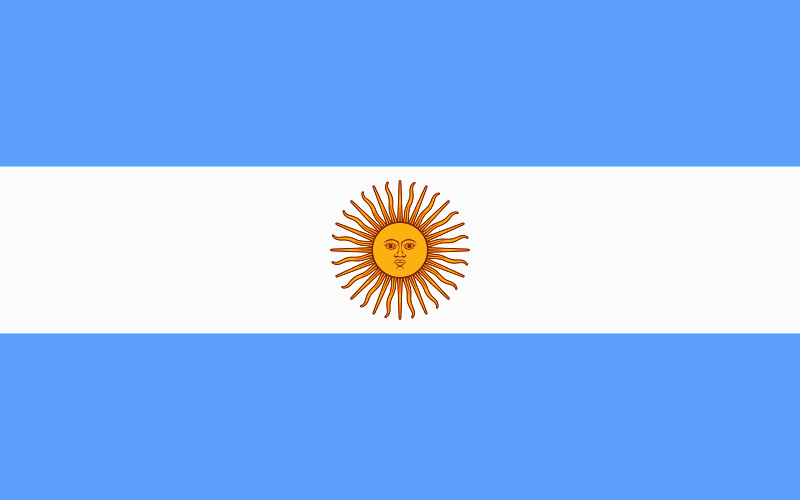|
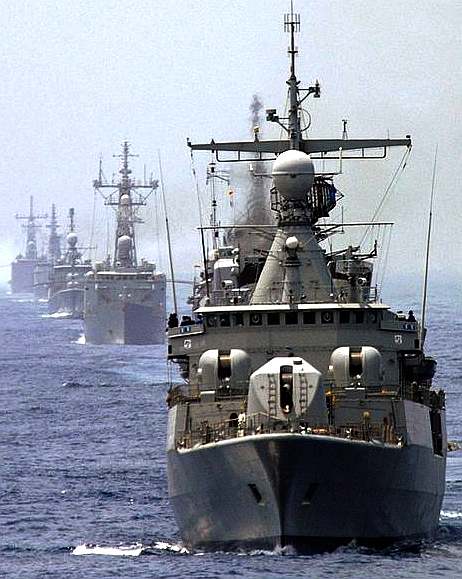
The Argentine Navy or Navy of the Argentine Republic or Armada of the Argentine Republic (Spanish: Armada de la República
Argentina — ARA, also Armada Argentina) is the navy of Argentina. It is one of the three branches of the Armed Forces of the Argentine Republic, together with the Army and the Air Force. Each ship of the Argentine Navy is designated with the prefix "ARA" before its name.
The Argentine Navy day is celebrated on May 17, anniversary of the victory achieved in 1814 in the Battle of Montevideo over the Spanish fleet during the war of Independence.
The Argentine Navy participates in joint exercises with other friendly navies like Brazil, United States, Spain, France, Canada, South Africa, Italy, Uruguay, and since the 1990s, Chile. They are also routinely held, in order to develop a common operational doctrine. Every year in conjunction with the Chilean Navy the Argentine Navy participate in the Patrulla Antártica Naval Combinada (English: Joint
Antarctic Naval Patrol) to guarantee safety to all touristic and scientific ships that are in transit within the Antarctic Peninsula where the Navy is also directly responsible of maintaining the Argentine bases there.
In 2010 the construction start of four 1,800 ton offshore patrol ships was announced, but no keel has ever been laid down. Also in May 2010, Defence Minister Nilda Garre announced that the Navy would continue working on a system that would enable the launch of Exocet missiles from the Navy’s P-3 Orion aircraft. In addition, the financing of the local development and construction of a coastal naval defence system that may also be based on the use of Exocet missiles similar to the Excalibur system.
In October 2012 the Navy's sail training ship ARA Libertad was seized under court order in Ghana by creditors of Argentina's debt default in 2002. On 15 December 2012 the UN International Tribunal for the Law of the Sea ruled unanimously that the ship had immunity as a military vessel, and ordered that "Ghana should forthwith and unconditionally release the frigate ARA Libertad" Four days later Libertad was released from Tema and arrived to the port of Mar del Plata on 9 January 2013.
Current fleet
The Argentine Navy is under-funded and struggling to meet maintenance and training requirements, as a result only 15 out of a total of 42 navy vessels are in a condition to sail. The 2013 defence budget allowed for the 15 operational vessels to each spend less than 11 days at sea, whilst the submarines averaged just over 6 hours submerged in the whole of 2012. ARA Espora spent 73 days in late 2012 stranded in
South Africa for lack of spares. The Almirante Brown-class destroyers are short of spares and their ordnance has expired whilst the Antarctic patrol ship ARA Almirante Irizar has been under repair since a fire in 2007. On 23 January 2013 the Type 42 destroyer ARA Santísima Trinidad sank at her moorings having been mothballed for ten years.
Submarine Force
The Argentine Submarine Force was first created when the Navy first started using submarines in 1927. As of 2013 the force is headquartered at Mar del Plata . The elite group Tactical Divers Group is also under the submarine force command structure - among its assets are three submarines and two auxiliary/support vessels.
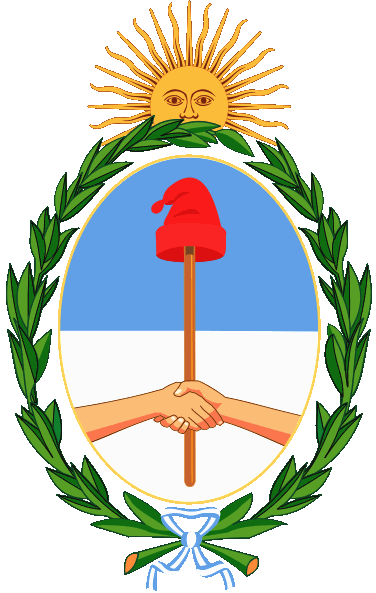
20th
CENTURY
Although Argentina remained neutral in both world wars, the country's navy was a force to be reckoned with. In 1940, Argentina's navy was ranked the eighth most powerful in the world (after the European powers, Japan, and the United States) and the largest in Latin America. A ten-year building programme costing $60 million had produced a force of 14,500 sailors and over a thousand officers. The fleet in 1940 included two First World War-era (but modernized) American-built Rivadavia-class battleships, three modern cruisers, a dozen British-built destroyers, and three submarines in addition to
minelayers, minesweepers, coastal defence ships, and gunboats. A naval air force was also in operation.
In the postwar period, Naval Aviation and Marine Corps units were put under direct Navy command. With Brazil, Argentina is one of two South American countries to have operated two aircraft carriers effectively: the ARA Independencia and ARA Veinticinco de Mayo.
The Argentine Navy has been traditionally greatly involved in fishery inspection helping the Coast Guard: most notably in 1966 a destroyer fired on and holed a Soviet trawler which had refused to be escorted to Mar del Plata, in the 1970s there were four more incidents with Soviet and Bulgarian ships and continued in recent years.
The Navy also took part in all military coups through the 20th century. During the last dictatorship, Navy personnel were involved in the Dirty War of the late 1970s in which thousands of people were kidnapped, tortured and killed by the forces of the Military Junta. The Naval Mechanics School, known as ESMA, was a notorious centre for torture. Amongst their more well-known victims were the
Swedish teenager Dagmar Hagelin and
French nuns, Alice Domon and Léonie Duquet (In October 2007 the Argentine Navy formally handed possession of the school to human rights groups to turn into a memorial museum). During this regimen, the Navy was also the main supporter of a military solution for the country's two long standing disputes: the Beagle Conflict with
Chile and the Falklands Islands (Spanish: Islas Malvinas) with the
United
Kingdom.
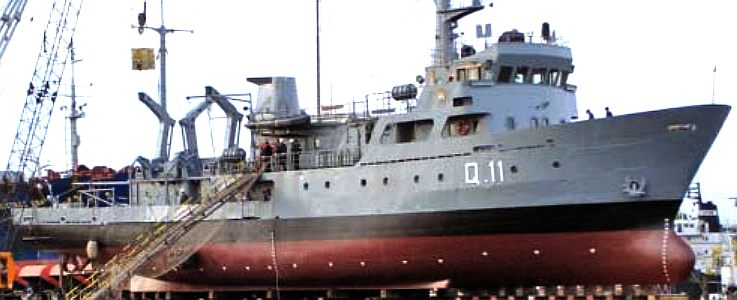
MINE
COUNTERMEASURES
In
2007 Kongsberg Maritime completed the installation and commissioning of the bathymetric systems onboard the 'ARA Comodoro Rivadavia', and the 'ARA Puerto Deseado', two Argentine Navy owned and operated Hydrographic vessels.
The upgrades were sponsored by the UNDP (United Nations Development Programs): The first through the Environmental Secretary of the Ministry of Health, and the second through COPLA (Argentine Commission to determine the Continental Platform Limits), of the Ministry of Foreign Affairs.
ARA Comodoro Rivadavia
The system installed on the ARA Comodoro Rivadavia is intended for shallow waters, and will be used for research and chart production of coastal waters and internal rivers. It consists of a two head EM 3000 multibeam, operating at 300Khz with a transducer hoisting system, an EA400 single beam operating at 38 and 200Khz, and an EA400P on the same frequencies. The system, which also benefits from having a Kongsberg Seatex MRU and DGPS positioning unit, was first used on South America`s southern channel, the Beagle channel, with great success.
ARA Puerto Deseado
The ARA Puerto Deseado is equipped with two redundant Kongsberg Maritime single beam EA600s, each with two frequencies: 200Khz for shallow waters and 12 Khz for depths down to 11000metres. The ship is now specified to fulfil COPLA´s needs.
The installation of the bathymetric equipment onboard ARA Puerto Deseado was particularly challenging. An initial installation period of 18 weeks was slashed to just 8 weeks due to the vessel being required to sail to the antarctic during a good weather window. The vessel has a very important bulb bow and a thruster tube in front of the transducers location, making installation more complex than normal and COPLA requires a far more stringent checklist, covering third party sensors, than that usually encountered by Kongsberg Maritime's installation team.
"Despite several unique challenges, the systems were installed and ready to go on time. After leaving the shipyard, all trials showed the high quality of the systems. The first surprise was getting marks up to 700 metres with 200Kz operation, in not too cold waters and with not very hard bottom. The other surprise was the lack of noise in the picture up to 6000 metres, especially with the difficult conditions found in the hull," comments Torbjorn Kjaer, head of single beam maintenance department at Kongsberg Maritime.
TECHNOLOGY
TRANSITION
In
the past a great show of strength
meant large ships and submarines cruising the
oceans burning fossil and nuclear fuels at an alarming rate. Today, cleaner
technology and persistent monitoring is seen as a better use of resources.
In the future solar powered ships will ply the oceans at almost no fuel cost
and may be fully autonomous - thus saving on crews and lives, should
engagement become necessary.
The
seeds of such technology are being planted in the development of the
Bluefish/SNAV
platform, a small ship that runs on energy harvested from nature. Navies may
modify the core design for themselves under licence, or put forward a
specification to meet their needs for development in the UK, or for build by a
contractor in Argentina under licence,
which could include the right to build for other navies.
The
future of naval warfare is not having a big ship, but knowing where the
enemy's big ship is - so that it may be neutralized. A big ship is therefore
not an asset, other than for fleet display and propaganda purposes. A big
ship is a target. Whereas,
the real problems of coastal control, charting and mine
countermeasures, are everyday services that need to be carried out. An
effective naval force is one that does its duty as well or better, for less
than another navy. In the modern world, if you are not thinking ahead, you
are going backwards.
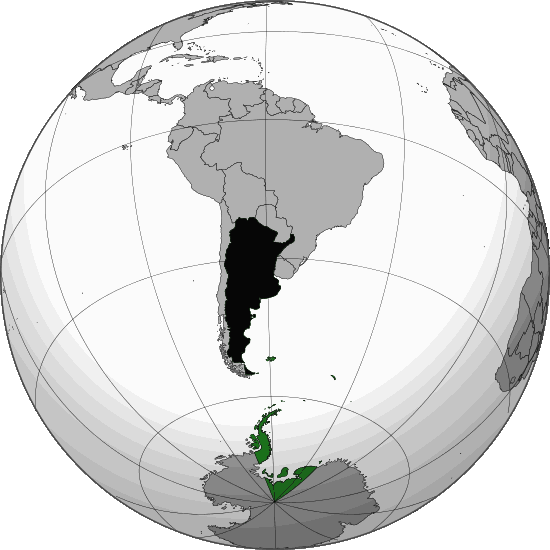
CONTACTS
LINKS
& REFERENCE
http://en.wikipedia.org/wiki/Argentine_Navy http://www.km.kongsberg.com/ks/web/nokbg0238.nsf/AllWeb/FF628A62EE1DB1C7C1257299005263AF
http://www.dimdex.com/en/warship-display.aspx http://www.npp.com.qa/ http://en.wikipedia.org/wiki/Qatar_Armed_Forces
|
